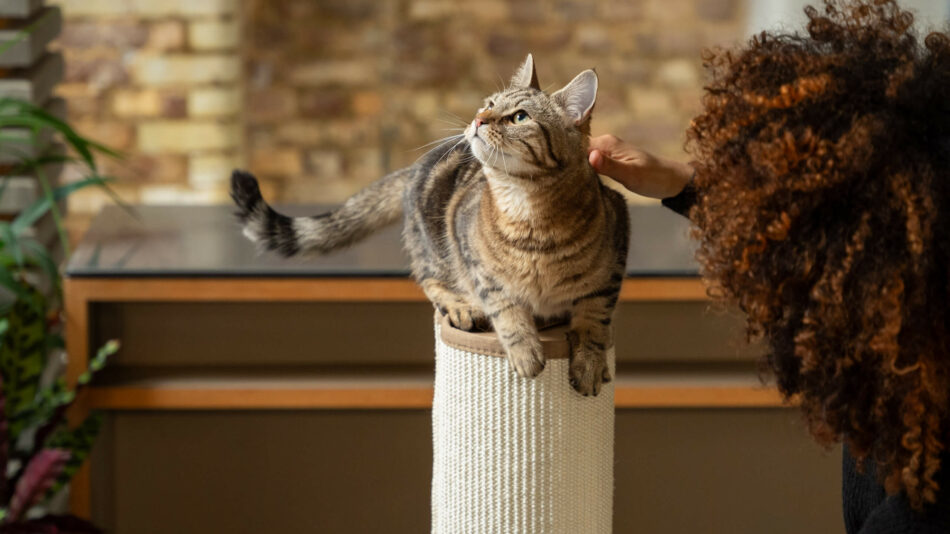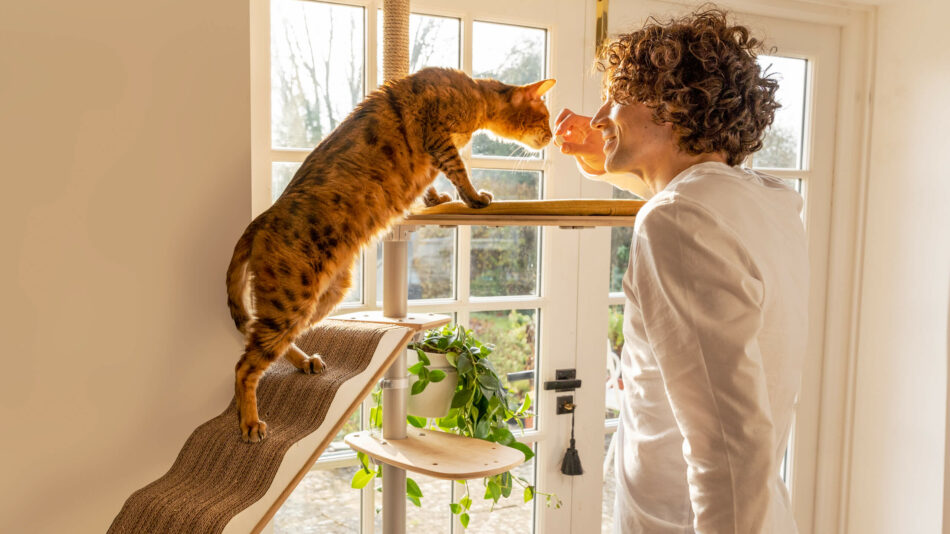An easy guide to understanding cat behaviour
Welcome to the fascinating world of feline behaviour. Cats, with their mysterious ways and charming personalities, have intrigued humans for centuries. In this guide, we’ll take a look at the enlightening journey to decipher the language of our beloved feline companions. From decoding their body language to understanding their various moods and behaviours, this guide aims to provide valuable insights into the inner workings of your cat’s mind. By gaining a deeper understanding of why cats behave the way they do, you’ll be better equipped to foster a harmonious and fulfilling relationship with your furry friend.
Learning to read cat language
One of the keys to learning your cat’s language lies in interpreting their body language. Cats communicate a wealth of information through subtle cues such as ear position, tail movements, and facial expressions. Understanding a cat’s body language is like deciphering a mysterious code, but once you crack it, you’ll find yourself fluent in feline.
Cat tail
Let’s start with the cat tail—it’s like their personal communication system. A straight-up tail signals confidence and a friendly greeting, while a swishing tail might indicate agitation or playful anticipation. If the tail puffs up like a bottle brush, watch out—your kitty might be feeling threatened or startled.
Cat ears
All cats like a good scratch behind the ears but did you know their ears are another window into a cat’s mood? Forward-facing ears mean your cat is curious or engaged in what they are sensing. However, flattened ears are a signal of fear or aggression.
Cat eyes
Don’t forget to keep watch of these eye blinks too. Slow blinks are the feline equivalent of a love letter, showing trust and contentment. Whereas long, focused stares indicate they are honed in on something important. By paying close attention to these signals, we can gain valuable insights into our cat’s emotional state and respond accordingly.
But why do cats behave this way? Much of feline body language can be traced back to their evolutionary history as solitary hunters. In the wild, cats rely on their ability to communicate effectively with other cats to establish boundaries, express dominance, and signal readiness to interact or defend themselves. Understanding these innate behaviours can help us better navigate our interactions with our domesticated feline friends and build trust and rapport over time.
Understanding cat moods
Understanding a cat’s mood goes beyond just observing its body language; it’s about tuning into the subtle cues that reveal their inner emotional states. Cats are complex creatures, and decoding their moods requires a keen eye and a bit of intuition. By familiarizing ourselves with the various moods and behaviours displayed by cats, we can better understand their needs and provide appropriate care and support.
One telltale sign of a content cat is the rhythmic swishing of its tail, accompanied by relaxed ears and half-closed eyes. In this state, your feline friend is likely feeling calm and comfortable, basking in the warmth of your companionship. On the flip side, if you notice your cat’s tail twitching rapidly or its ears flattened against its head, it might be feeling agitated or anxious. Understanding these signals allows you to adjust your approach and provide the appropriate support, whether it’s giving them space or offering reassuring pets.
But what causes these shifts in mood? A cat’s mood can be influenced by various factors, including their environment, routine, and social interactions. Changes in behaviour, such as excessive grooming or withdrawal, could signal underlying stress or discomfort. It’s essential to pay attention to these subtle shifts and address any potential triggers to ensure your cat’s well-being.
Additionally, providing enrichment activities and opportunities for play can help alleviate boredom and prevent negative emotions from festering. By fostering a supportive and stimulating environment, you can cultivate a strong bond with your cat and better understand their unique personality quirks. After all, just like us, cats experience a range of emotions, and by tuning into their subtle cues, we can ensure they lead happy and fulfilling lives by our side.
Different cat breeds, different behaviour
Just like people, cats have their own unique personalities and ways of expressing themselves, often through subtle yet distinct body language cues. Different cat breeds may showcase varying behaviours and moods, adding a fascinating layer to their already enigmatic charm.
Take the Siamese, for example. Known for their vocal nature, these cats aren’t shy about expressing their feelings through meows and yowls. When a siamese is feeling content, they might purr melodically while rubbing against your legs affectionately. However, when they’re upset or feeling ignored, they’ll make their discontent known with loud vocalizations and perhaps even a stern stare.
On the flip side, the majestic Maine Coon tends to display a more laid-back demeanour. With their bushy tails held high and ears perked up, these gentle giants exude confidence and tranquillity. Yet, when a Maine Coon is feeling playful, their body language transforms into a lively dance of pouncing and chasing toys with gusto.
Contrastingly, the sleek and elegant Abyssinian carries themselves with an air of curiosity and intelligence. Their wide-eyed gaze and agile movements reveal a cat constantly on the lookout for adventure and stimulation. Whether they’re gracefully leaping onto high perches or engaging in a game of fetch, Abyssinians embody a spirited energy that’s as captivating as it is endearing.
In essence, understanding these subtle nuances of body language among different cat breeds adds depth to our bond with these fascinating felines.
You and your cat’s language
When you’re in sync with your cat’s body language, it’s like having a direct line to their innermost thoughts and emotions. This newfound understanding fosters a sense of trust and mutual respect between you and your furry companion. You’ll find yourself sharing inside jokes with your cat through playful interactions and knowing glances. Plus, being able to recognise when your cat is feeling happy, anxious, or in need of some alone time allows you to tailor your interactions accordingly, ensuring that they feel loved and cared for at all times. So, next time your cat gives you that knowing look or curls up beside you with a contented purr, remember, it’s all part of the beautiful dance of feline communication that deepens the bond between you both.
Omlet and your cat
Understanding cat behaviour is an ongoing journey that requires patience, observation, and empathy. By taking the time to learn and understand the unique language of your feline friend, you can forge a deeper and more meaningful connection that enriches both your lives. At Omlet, we are committed to fostering understanding and appreciation for the wondrous connections between pets and their people. Through our innovative products like the customizable Freestyle Indoor Cat Tree or the unique designs of the Maya Donut Cat Beds, we strive to empower pet owners to create lasting bonds with their furry companions. Together, let’s celebrate the magic of the pet-person bond and continue to explore the fascinating world of animal behaviour.
This entry was posted in Cats


